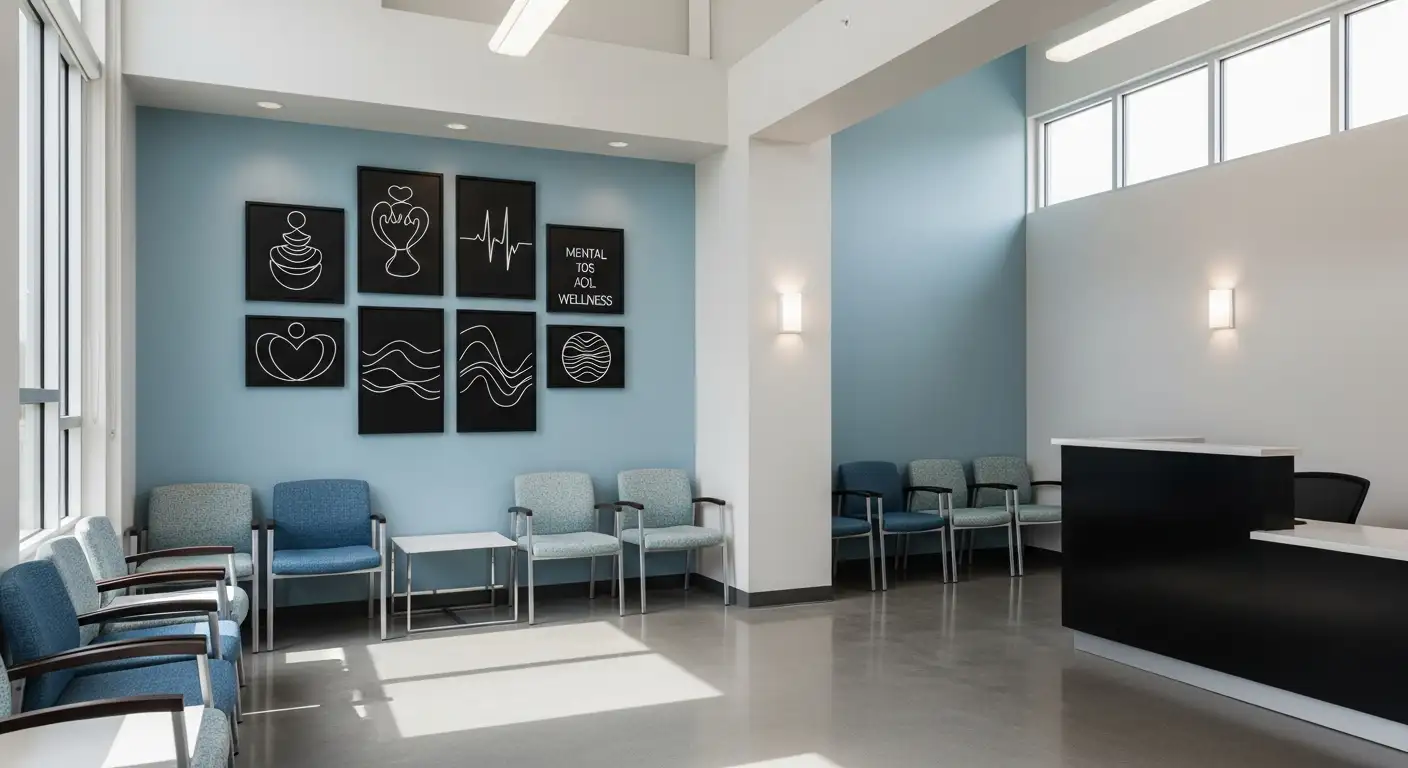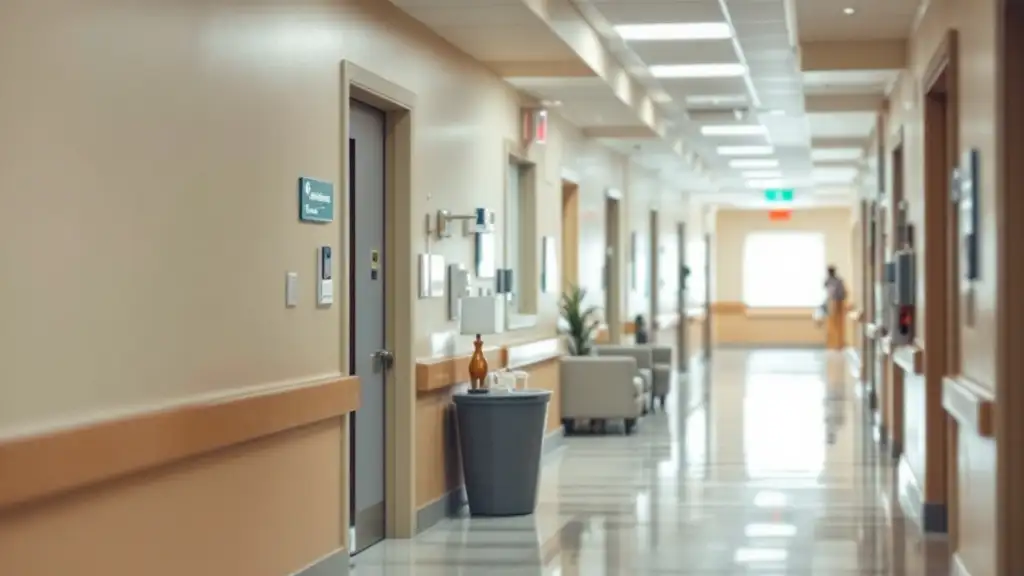Enhancing Treatment Outcomes in Geriatric Behavioral Health
Balancing medication and therapy in behavioral treatment plans for the elderly is a complex yet essential aspect of geriatric mental health care. This article explores comprehensive strategies involving assessment, individualized planning, and multidisciplinary collaboration to effectively combine pharmacological and non-pharmacological interventions, thereby improving engagement, safety, and overall outcomes for older adults.
The Importance of a Holistic, Integrative Approach in Geriatric Mental Health
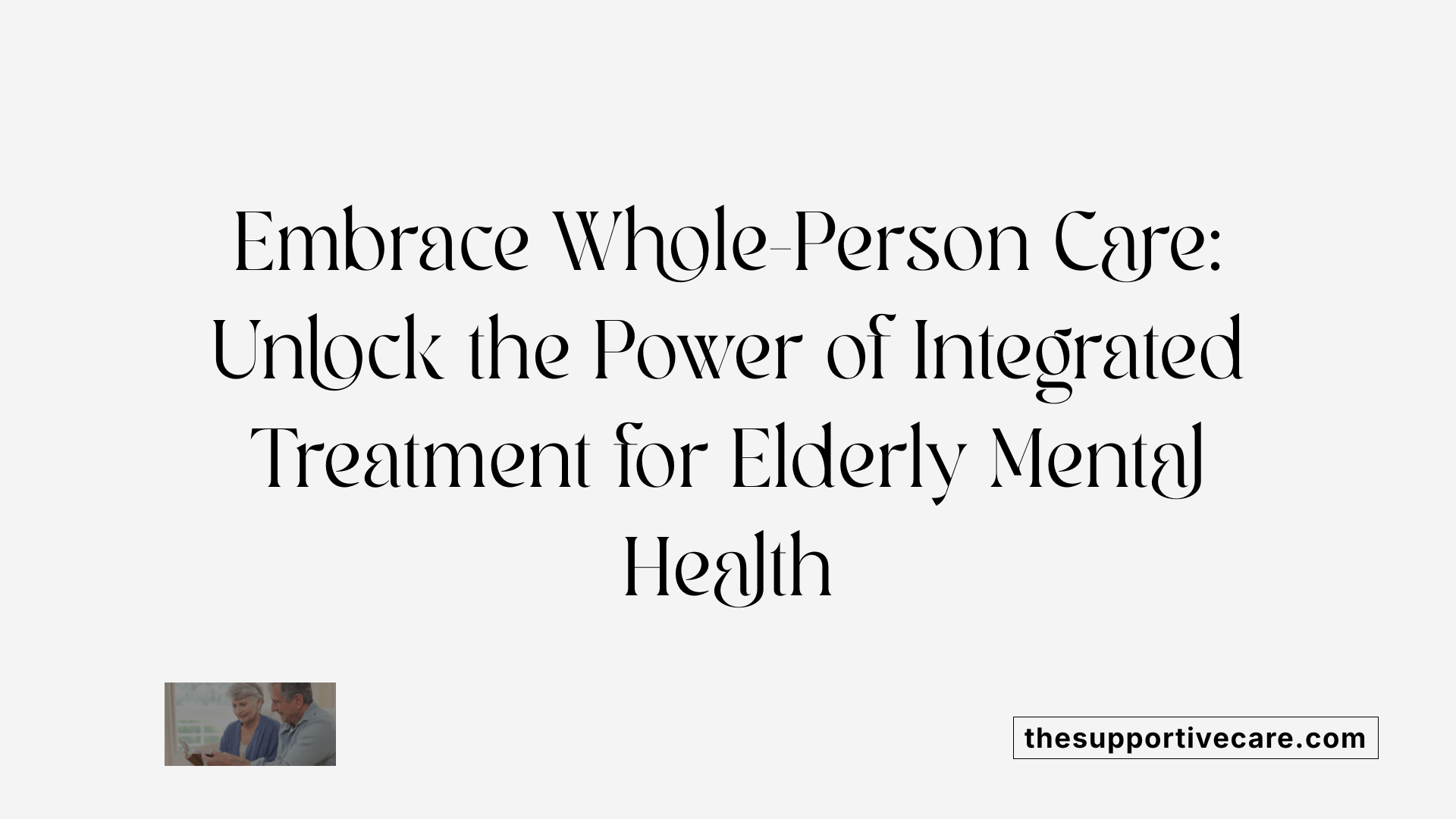
Why is integrating medication management with psychosocial and behavioral therapies important in elderly care?
In caring for older adults with mental health conditions, it’s crucial to adopt a holistic approach that combines medication management with psychosocial and behavioral therapies. This integrated strategy recognizes that mental health issues in the elderly are influenced by a complex constellation of biological, psychological, and social factors.
Medications, such as antidepressants and antipsychotics, play a vital role in alleviating symptoms, stabilizing mood, and addressing neurochemical imbalances. They are often the first step in managing conditions like depression, anxiety, or psychosis. However, medication alone may not be sufficient for meaningful recovery or long-term stability.
Psychosocial and behavioral therapies, including cognitive-behavioral therapy (CBT), reminiscence therapy, and social skills training, target underlying emotional and social contributors to mental health issues. These therapies help elders develop coping strategies, improve social engagement, and process their experiences and feelings.
When medication and therapy are combined, they work synergistically. Medication can make individuals more receptive to therapy, reducing distress and enabling engagement in activities that promote mental resilience. Conversely, psychotherapy can help diminish reliance on medications over time by addressing root causes and teaching patients sustainable skills.
This comprehensive approach enhances treatment adherence and effectiveness. It also reduces the risk of relapse and adverse outcomes by ensuring that treatment addresses all relevant aspects of the patient’s well-being. Collaborative care models, which involve multidisciplinary teams of healthcare providers, facilitate personalized treatment plans and regular adjustments tailored to the patient's evolving needs.
Overall, integrating medication with psychosocial interventions results in more responsive, patient-centered care. It promotes not only immediate symptom relief but also supports the development of resilience and social connectedness—crucial elements for maintaining quality of life in older adults.
This approach aligns with modern geriatric mental health principles that emphasize treating the whole person, considering their medical history, functional status, social environment, and personal goals. By doing so, healthcare providers can optimize outcomes and foster a sense of empowerment and well-being among elder patients.
Psychosocial Factors and Engagement Barriers in Elderly Mental Health Treatments
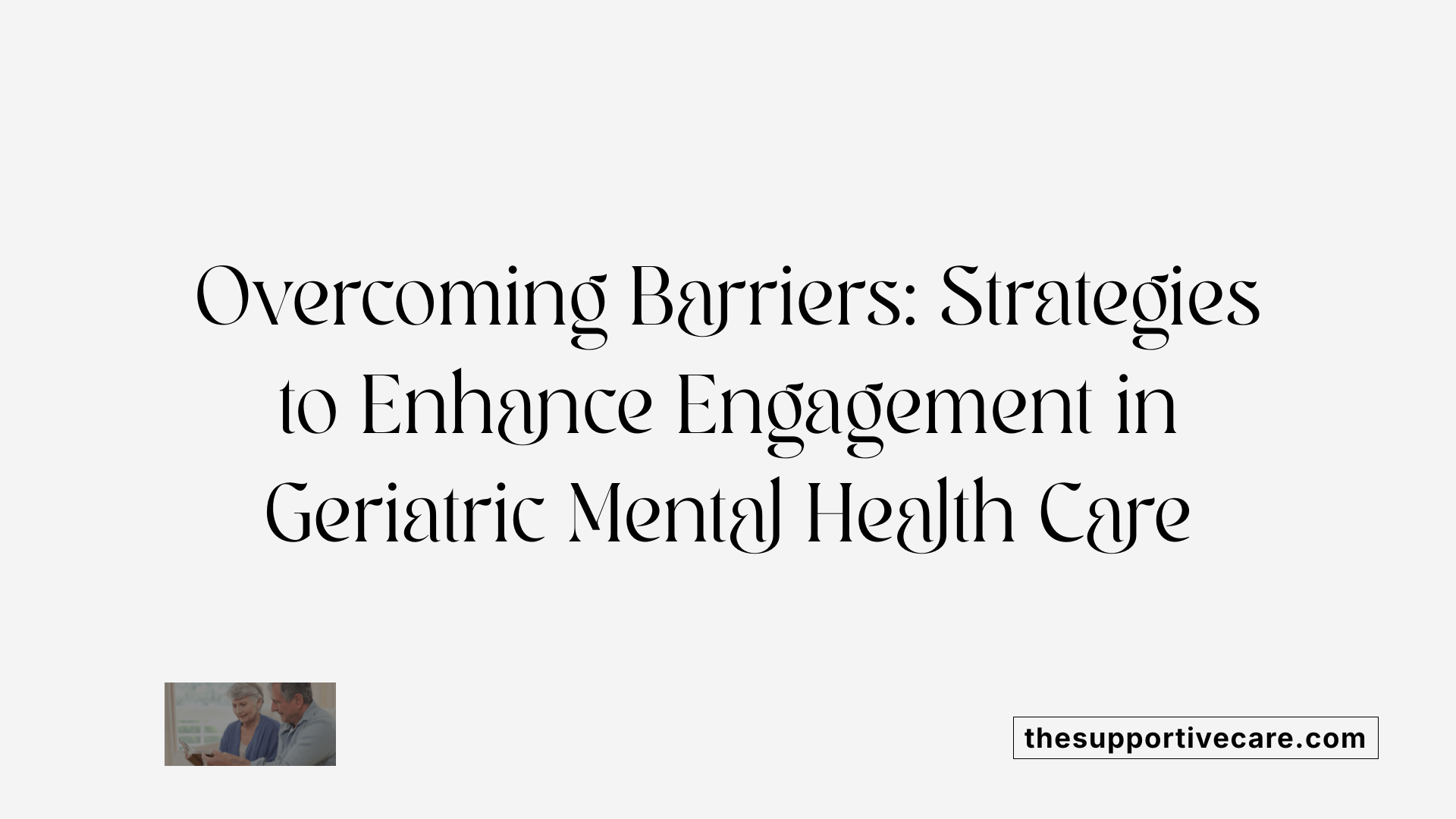
Why are negative attitudes and beliefs about mental illness significant barriers for older adults?
Many older adults hold negative attitudes and misconceptions about mental health conditions, which can deter them from seeking help. These beliefs may include stigma, feelings of shame, or the perception that mental health issues are a normal part of aging that must be endured silently. Such attitudes reduce the likelihood of engagement with available treatments and can delay necessary interventions, resulting in worsening symptoms and decreased quality of life.
How does interactional factors like lack of involvement in decision-making affect treatment acceptance?
Interactional factors, particularly the lack of involvement in their own care decisions, can significantly undermine older adults’ motivation to participate in mental health interventions. When patients feel excluded from discussions about their treatment options, they may perceive the care as less personalized or trustworthy, leading to reduced adherence and engagement. Shared decision-making (SDM), which involves collaboration and information exchange, helps empower older adults, making them more receptive to treatment plans.
What barriers exist at different points in the treatment engagement process?
Barriers to engagement include psychological obstacles such as stigma, fears, and negative beliefs about mental illness. Tangible barriers also play a role, such as transportation issues, financial concerns, and difficulty navigating healthcare systems. Psychosocial barriers are often compounded by interactional issues, like feeling unheard or powerless in treatment planning. Targeted interventions aim to address these obstacles at various stages—initial acceptance, treatment initiation, and ongoing engagement.
Interventions to Improve Treatment Engagement
To overcome these barriers, several strategies have been developed.
- Open Door Intervention: This approach tackles both psychological and tangible barriers by providing psychoeducation to improve understanding and motivational interviewing to enhance willingness to participate.
- Shared Decision-Making (SDM): Emphasizing collaboration, SDM involves patients actively in choosing their treatments, exploring preferences, and exchanging information, fostering a sense of control.
- Treatment Initiation Program (TIP): Focused on early adherence, TIP addresses beliefs such as stigma and fears through multiple sessions involving symptom review, barrier assessment, psychoeducation, and collaboration with physicians.
The Importance of a Holistic and Collaborative Approach
Effective management of behavioral health in older adults integrates medication, therapy, and psychosocial supports. A comprehensive approach considers age-related physiological changes, comorbidities, and social factors.
- Medication Management: Start low and go slow when prescribing psychoactive medications, considering altered pharmacokinetics to minimize side effects. Regular medication reconciliation reduces misuse risks in polypharmacy scenarios.
- Psychotherapy: Evidence supports the use of cognitive-behavioral therapy (CBT) and behavioral activation, which can be delivered alone or alongside medication to address mood and activity avoidance.
- Addressing Substance Use: Discontinuing substances following harm reduction principles prevents exacerbation of mental health symptoms.
Tailoring Interventions and Embracing a Supportive Environment
Implementing evidence-based practices specifically designed for older adults enhances effectiveness. These include Assertive Community Treatment (ACT), Cognitive Behavioral Social Skills Training (CBSST), and other programs backed by rigorous research.
- Cultural and Individual Adaptation: Tailoring treatment to cultural backgrounds and personal preferences increases engagement and adherence.
- Family and Social Support: Involving caregivers and social networks helps create a supportive environment conducive to recovery.
Overcoming Barriers Through Education and Collaboration
Healthcare providers should emphasize the importance of psychoeducation to challenge misbeliefs about mental illness. Encouraging open conversations, involving patients in decision-making, and ensuring accessibility through community and telehealth services lay the groundwork for improved engagement.
| Aspect | Description | Impact |
|---|---|---|
| Negative attitudes & beliefs | Stigma, shame, misconception about mental illness | Reduced treatment seeking |
| Lack of involvement | Minimal patient participation in decision-making | Lower adherence, less engagement |
| Practical barriers | Transportation, financial issues, system navigation | Limited access to care |
| Interventions | Psychoeducation, motivational interviewing, SDM, TIP | Enhanced acceptance and adherence |
| Treatment modalities | Medication, psychotherapy, social support | Improved overall outcomes |
How do these barriers influence treatment adherence and recovery?
Addressing psychosocial and interactional barriers early and throughout treatment promotes better adherence, reduces dropout, and supports sustained recovery. Emphasizing a holistic, patient-centered approach that respects the elderly’s preferences and incorporates their social context ensures that mental health interventions are effective and sustainable.
Interventions to Overcome Engagement Barriers in Geriatric Behavioral Health
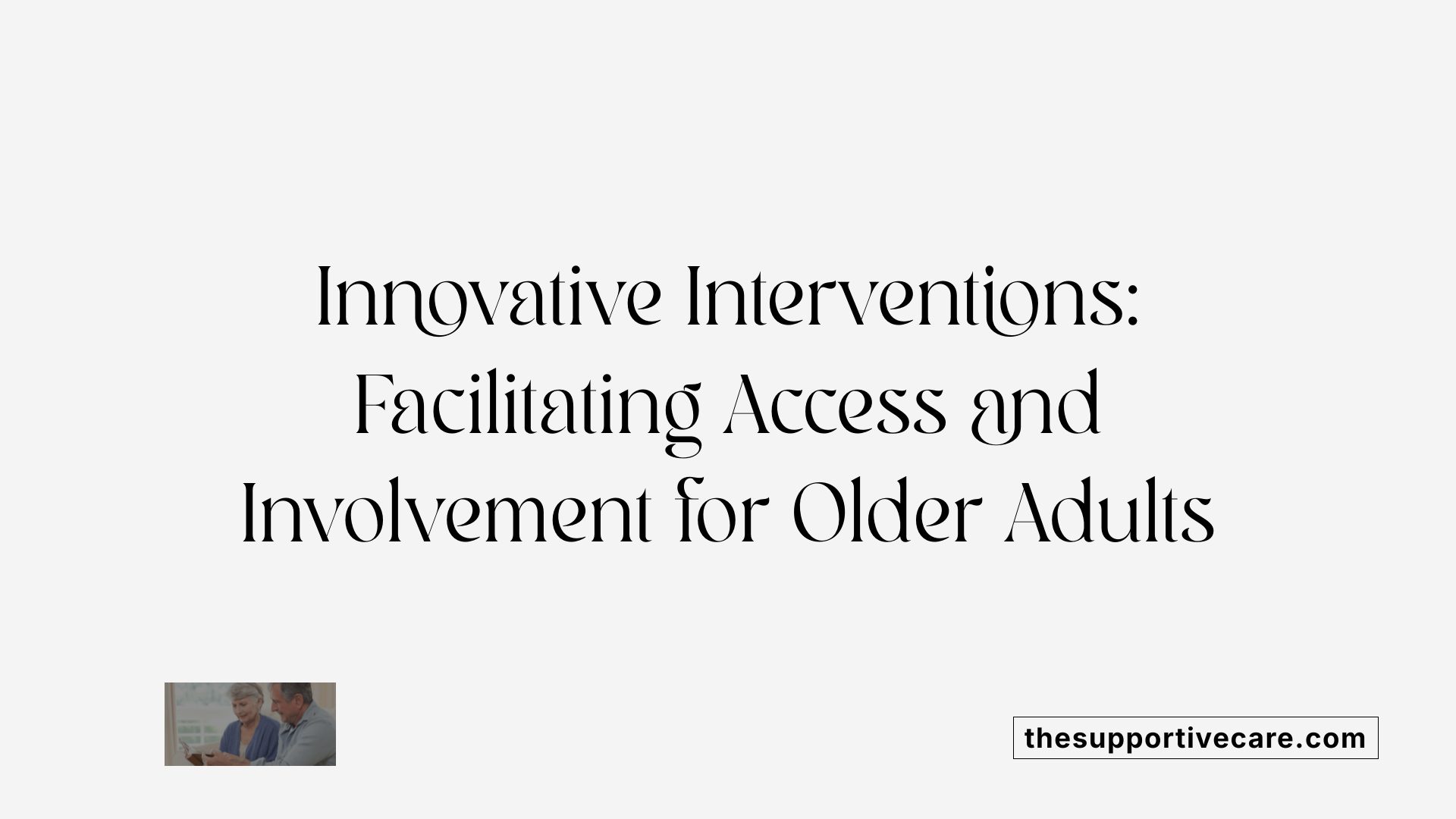
How do psychosocial and interactional factors impact older adults’ acceptance of mental health interventions?
Older adults often face challenges in accepting mental health treatments due to psychosocial and interactional factors. Negative attitudes and beliefs about mental illness, such as stigma or misconceptions, can create resistance to seeking help or adhering to treatment plans. Additionally, interactional issues like limited involvement in medical decision-making can reduce their sense of control and motivation. When older adults feel disempowered or misunderstood, they may be less willing to engage with interventions, which can hinder the effectiveness of mental health care.
What is the Open Door intervention and how does it address barriers to care?
The Open Door intervention focuses on breaking down psychological and tangible barriers that prevent older adults from accessing care. It employs psychoeducation to dispel myths about mental illness, normalize treatment, and foster understanding. Motivational interviewing is also integrated to enhance motivation and resolve ambivalence toward treatment.
How do psychoeducation and motivational interviewing facilitate treatment engagement?
Psychoeducation helps older adults understand their mental health issues and the benefits of treatment, reducing fear and misconceptions. Motivational interviewing supports individuals in exploring their feelings about treatment, strengthening their intrinsic motivation to participate. Together, these approaches create a supportive environment that encourages commitment to mental health interventions and promotes sustained engagement.
What role does shared decision-making (SDM) play in geriatric mental health?
Shared decision-making (SDM) emphasizes collaboration between healthcare providers and older adults. It involves exchanging information about treatment options, exploring patient preferences, and jointly selecting interventions. SDM empowers older adults, respects their autonomy, and increases their willingness to participate actively in their care. This collaborative process leads to more personalized and acceptable treatment plans, ultimately improving adherence and outcomes.
How does the Treatment Initiation Program (TIP) support early adherence?
The TIP targets early stages of pharmacologic depression treatment by addressing psychological barriers such as stigma, fears, and symptom attribution. It involves multiple sessions where clinicians review symptoms, assess barriers, provide psychoeducation, and work closely with physicians. This approach ensures that older adults understand their treatment, feel supported, and are more likely to initiate and stick with prescribed medications.
Why is a holistic approach important in treating behavioral health among older adults?
A comprehensive strategy that combines medication management with psychotherapy addresses diverse needs and conditions. This integrated approach recognizes the complex interplay of biological, psychological, and social factors affecting older adults. It improves overall outcomes by tailoring interventions to individual circumstances, supporting medication adherence, and promoting mental resilience.
What precautions should be taken when prescribing psychotropic medications to the elderly?
Since aging alters drug absorption, distribution, metabolism, and excretion, medications should be started at low doses and titrated slowly. Careful monitoring for side effects such as falls, cognitive impairment, or cardiovascular effects is essential. Regular medication reconciliation prevents polypharmacy risks and adverse interactions, especially since older adults often have multiple chronic conditions.
How can medication adherence be improved among seniors prescribed multiple medications?
Educational, behavioral, and combined interventions are effective in enhancing adherence. Behavioral strategies include reminders, simplifying regimens, and involving caregivers. Meta-analyses show that mixed approaches can increase adherence rates by about 12.8%. Better adherence also reduces emergency visits and hospitalizations, highlighting the importance of tailored interventions.
What is the significance of medication management and reconciliation?
Proper medication management, including thorough review and reconciliation, minimizes misuse, adverse effects, and drug interactions, especially given the high prevalence of polypharmacy in older adults. Using tools like the Beers criteria helps identify potentially inappropriate medications, ensuring safety and better health outcomes.
How do medications complement psychosocial treatments?
Medications help stabilize symptoms of depression, anxiety, and psychosis, creating a foundation for engaging in psychosocial therapies like CBT and reminiscence therapy. This combination enhances symptom control, fosters engagement, and improves overall functioning. Long-acting injectables further support adherence, especially in patients with complex medication regimens.
What are future directions for behavioral health interventions for older adults?
Emerging personalized treatments integrate pharmacogenetics, digital health tools, and community support systems. These advances aim to tailor interventions more precisely and efficiently. Programs like naloxone deployment and medication-assisted treatments for opioid misuse demonstrate how medication can save lives and improve behavioral health outcomes.
What evidence supports psychosocial interventions for seniors with serious mental illness?
Research, including randomized controlled trials, supports the effectiveness of interventions like Cognitive Behavioral Social Skills Training (CBSST), Functional Adaptation Skills Training (FAST), and Help Older People Experience Success (HOPES). These programs improve community functioning, reduce psychiatric symptoms, and enhance quality of life. Proper implementation involving staff training and cultural adaptation is crucial.
How does age-related physiological change influence medication management?
Older adults experience decreased renal and hepatic function, affecting drug metabolism and clearance. These changes necessitate cautious initial dosing, slow titration, and vigilant monitoring to avoid toxicity. Polypharmacy further complicates management, thus regular medication reviews using tools like STOPP/START criteria are recommended.
Why are nonpharmacologic treatments important?
Safer options such as psychotherapy, reminiscence, art, music, and relaxation therapies can be effective without the risks associated with medications. These approaches often improve mood, reduce anxiety, and promote cognitive health, making them suitable alternatives or adjuncts, especially for very frail or medication-sensitive seniors.
How should deprescribing be approached in the elderly?
Gradual tapering and individualized plans help reduce medication overload and minimize withdrawal or adverse effects. Identifying inappropriate medications via tools like the Beers criteria supports safe discontinuation. Regular review ensures medications align with the current health goals and functional status.
What is the role of social support and lifestyle modifications?
Community activities, social groups, and purposeful engagement boost emotional wellbeing and reduce social isolation. Lifestyle modifications such as balanced diets, physical activity, and stress management further support mental health. These holistic strategies complement medical treatments, promoting resilience and quality of life.
How do comprehensive treatment models improve outcomes?
Collaborative and integrated care involving primary care, behavioral health specialists, and community resources provides tailored, continuous support. These models facilitate early intervention, improve medication adherence, and address social determinants, leading to better management of chronic conditions and mental health in older adults.
Promoting Shared Decision-Making for Better Treatment Adherence
What is shared decision-making (SDM)?
Shared decision-making is a collaborative process where healthcare providers and patients work together to make treatment choices. It involves exchanging information about options, discussing the patient’s preferences, and reaching mutual decisions about care.
In the context of older adults, SDM recognizes their right to be actively involved in their health management, especially when dealing with complex medication regimens or therapy choices. This approach helps ensure that treatment aligns with their values and lifestyle, improving satisfaction and adherence.
How does patient involvement enhance treatment success?
Patient involvement is vital in fostering a sense of ownership and confidence in treatment plans. When older adults participate in decisions, they are more likely to understand their options and adhere to agreed-upon therapies.
Engagement through SDM can lead to better management of chronic conditions, such as depression and anxiety, by addressing concerns about medications or therapies upfront. It also reduces feelings of helplessness and promotes independence.
Why are information exchange and exploration of preferences important?
Effective SDM relies on open dialogue where healthcare providers share clear, comprehensive information about the benefits, risks, and alternatives of treatments.
Older adults often have unique health goals and preferences—they might prioritize maintaining independence over aggressive treatment options or prefer non-pharmacologic interventions. Exploring these preferences ensures that treatment plans are tailored, realistic, and more acceptable.
This collaborative process often involves discussing concerns about side effects, medication burden, or potential interactions, especially crucial given the high prevalence of polypharmacy in elderly populations. When patients see their values reflected in care decisions, they are more motivated to follow through.
The impact of SDM on medication adherence and health outcomes
Research indicates that shared decision-making significantly improves medication adherence among older adults prescribed multiple medications. It fosters trust, reduces medication-related fears, and clarifies misunderstandings.
Furthermore, SDM can contribute to reduced healthcare utilization, such as fewer emergency visits and hospitalizations, by promoting consistent and appropriate treatment adherence.
| Aspect | Benefits | Additional Details |
|---|---|---|
| Patient involvement | Increased motivation, satisfaction | Promotes independence and respects autonomy |
| Information exchange | Better understanding, fewer misconceptions | Includes discussing side effects, treatment goals |
| Preference exploration | Personalized care plans | Focuses on individual lifestyle and values |
| Overall outcome | Improved adherence, well-being | Supports holistic and sustained management |
Integrating SDM and psychosocial interventions
Implementing shared decision-making in older adult care often involves psychosocial interventions like psychoeducation or motivational interviewing. These strategies help address psychological barriers such as negative beliefs about mental health treatments or reluctance to involve oneself in decision-making.
Combining SDM with interventions like psychoeducation ensures that older adults are well-informed and psychologically prepared to engage actively in their treatment plans.
How does integrated behavioral health benefit older adults in managing chronic health conditions?
Integrated behavioral health benefits older adults managing chronic health conditions by providing comprehensive, coordinated care that addresses both physical and mental health needs. This approach facilitates early identification and treatment of mental health concerns, which often complicate chronic disease management, leading to improved health outcomes.
By combining behavioral therapies, medication management, and support services within primary care settings, it enhances adherence to treatment plans and reduces healthcare utilization and costs. Additionally, integrated care models help destigmatize mental health treatment, encouraging engagement and sustained management of conditions like depression, anxiety, and other comorbidities common among older adults. Overall, integration promotes holistic well-being, functional improvement, and a better quality of life for older adults with chronic health issues.
Standardized Assessment and Monitoring Tools in Geriatric Behavioral Care
How can healthcare providers assess the safety, appropriateness, and efficacy of combined medication and therapy approaches for the elderly?
Evaluating the safety and effectiveness of combined medication and therapy in older adults involves a comprehensive, systematic approach. Healthcare providers primarily rely on detailed medication reviews, which are essential in assessing potential risks such as drug interactions and adverse effects. Tools like the Beers Criteria and STOPP/START criteria are instrumental in identifying potentially inappropriate medications for seniors, including benzodiazepines, certain antipsychotics, and high-risk antidepressants.
During reviews, clinicians should consider each patient’s health status, comorbidities, and current medications to avoid polypharmacy, which can increase the likelihood of adverse events. Regular medication reconciliation is vital to ensure ongoing appropriateness of prescriptions, especially as health conditions evolve.
Beyond medication assessment, evaluating therapy effectiveness involves monitoring clinical outcomes and patient-reported changes. Systematic tracking includes tools for cognitive, functional, and emotional status, such as the Mini-Mental State Examination (MMSE), Montreal Cognitive Assessment (MoCA), and Depression screening tools like PHQ-9.
In addition, collateral information from family members or caregivers offers invaluable insight into the patient's daily functioning and social engagement, helping to adjust treatment plans accordingly.
The integration of healthcare information technology supports continuous monitoring by providing reminders for regular assessment and alerts for potential issues. Interprofessional collaboration among physicians, psychiatrists, pharmacists, and behavioral health specialists enhances decision-making, ensuring that combined approaches are tailored, safe, and effective.
Emerging areas include the use of biomarkers for certain mental health conditions and digital tracking tools to monitor treatment adherence and response more precisely.
Standardized assessment of therapy outcomes and medication safety not only guides clinicians but also aligns with regulatory standards that emphasize early safety and efficacy evaluations. This structured approach aims to optimize mental health outcomes while minimizing harm, ultimately supporting the well-being of older adults.
Evidence and Tools Supporting Integrated Treatment in Elderly Populations
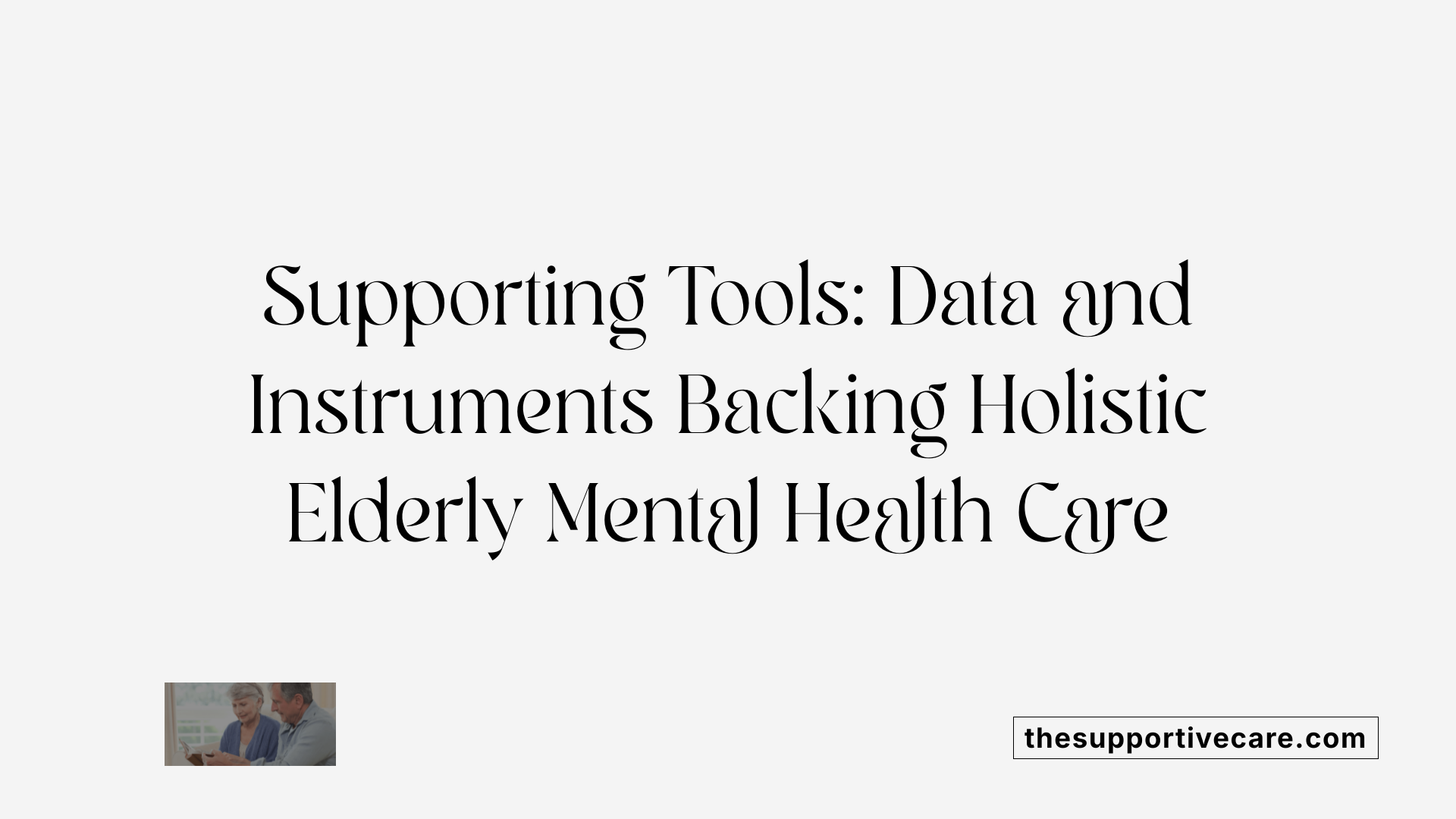
What tools and evidence support the use of integrated behavioral treatment plans for older adults?
For effective management of behavioral health in older adults, a combination of assessment tools, biomarkers, and a solid evidence base guides clinical practice.
Standardized assessment instruments are crucial for evaluating mental health, cognitive status, and social factors. Instruments like the Geriatric Depression Scale (GDS), PHQ-9, Mini-Mental State Examination (MMSE), and Montreal Cognitive Assessment (MoCA) help identify depression, cognitive impairments, and other mental health issues specific to the elderly. Collateral information from family members or caregivers enhances diagnostic accuracy.
Assessment tools also extend to evaluating social determinants of health. The UCLA Loneliness Scale, for example, measures social isolation, which can influence treatment outcomes.
Research backs many behavioral interventions with strong evidence of efficacy. Techniques such as behavioral activation, cognitive-behavioral therapy (CBT), motivational interviewing, and medication management have demonstrated positive effects in randomized controlled trials (RCTs). These practices often improve community functioning, symptom severity, and quality of life.
Collaborative care models like IMPACT (Improving Mood-Promoting Access to Collaborative Treatment) and PROSPECT (Prevention of Suicide in Primary Care Elderly: Collaborative Trial) are supported by robust evidence showing they significantly improve depression outcomes in elders. These models involve multidisciplinary teams—including primary care providers, mental health specialists, and care managers—to deliver coordinated care that is both efficient and effective.
Additionally, integrating physical health assessments through biomarkers, medical tests, and routine health checks informs treatment adjustments. For example, blood work to monitor medication levels or metabolic indicators ensures safety, especially given the common polypharmacy in this group.
Tools such as the Beers criteria and STOPP/START guidelines help identify potentially inappropriate medications, minimizing adverse effects, and optimizing pharmacotherapy.
Overall, the convergence of validated assessment instruments, biomarkers, and established clinical evidence supports comprehensive, integrated treatment plans tailored to the complex needs of older adults with behavioral health issues.
Medication Management and Safety: Start Low and Go Slow Approach
What are key considerations for medication management and safety when treating elderly patients?
When managing medications for older adults, especially those with mental health conditions, safety and precision are paramount. A fundamental principle is to start medications at low doses and titrate slowly, accounting for age-related changes in drug metabolism.
Start low and go slow rule
Older adults often experience altered pharmacokinetics, including reduced renal and hepatic function, which can affect how drugs are absorbed, distributed, metabolized, and excreted. Starting low helps minimize adverse effects, which can be more severe in this population.
Pharmacokinetics changes in elderly
As people age, physiological changes such as decreased blood flow to the liver and kidneys, along with reduced enzyme activity, slow down drug clearance. This increases the risk of drug accumulation, toxicity, and side effects. Therefore, clinicians must carefully select drug dosages and monitor responses.
Potential for side effects
Medications like benzodiazepines, antipsychotics, and certain antidepressants carry heightened risks in older individuals, including falls, cognitive impairment, and delirium. Close monitoring allows for prompt identification and management of any adverse effects.
Practical approaches for safe medication use
Routine medication reconciliation is crucial. This process involves reviewing all prescribed drugs, over-the-counter medications, and supplements to prevent interactions and duplication. Tools such as Beers criteria and STOPP/START criteria assist clinicians in identifying potentially inappropriate medications.
In addition, using technology like electronic prescribing and barcode scanning, verifying patient identity, and involving patients in medication education are essential safety measures. Regular medication reviews help determine whether drugs are still necessary or can be deprescribed.
Collaboration and ongoing review
A team-based approach involving physicians, pharmacists, and caregivers promotes safe medication practices. Regular follow-up and personalized adjustments based on the patient's health status, functional ability, and preferences optimize outcomes.
| Aspect | Consideration | Additional Details |
|---|---|---|
| Starting doses | Always begin with low doses | Especially important for psychotropic medications due to increased sensitivity |
| Titration | Incrementally increase dosage | To monitor effects and minimize side effects |
| Monitoring | Regular assessment | Including vigilant observation for cognitive or physical side effects |
| Polypharmacy | Review for necessity | Reduce the number of medications to minimize interactions |
| Use of guidelines | Apply Beers and STOPP criteria | To identify potentially inappropriate medications |
| Safety culture | Encourage error reporting | Continuous improvement in safety practices |
This comprehensive approach helps ensure medication safety, reduces adverse effects, and enhances treatment effectiveness, ultimately supporting better health outcomes in elderly patients.
Deprescribing and Polypharmacy Management in Geriatric Care
What tools and evidence support the use of integrated behavioral treatment plans for older adults?
The effectiveness of integrated behavioral treatment plans for older adults is supported by a range of assessment tools and robust research evidence. Standardized assessments such as the Geriatric Depression Scale (GDS), PHQ-9, Mini-Mental State Examination (MMSE), and Montreal Cognitive Assessment (MoCA) are routinely used to evaluate mental health, cognitive status, and emotional wellbeing. These tools facilitate comprehensive evaluation, enabling precise diagnosis and tailored treatment approaches.
In addition to clinical assessments, biomarkers—like cortisol levels, inflammatory markers, and neuroimaging—are increasingly incorporated to understand underlying biological processes influencing mental health in older adults.
Gathering collateral information from family members, caregivers, and medical records enhances the understanding of functional status and social factors impacting mental health. Using tools such as the UCLA Loneliness Scale helps assess social isolation, which is linked to adverse mental health outcomes.
The evidence supporting these approaches comes from numerous clinical trials and guidelines emphasizing multimodal intervention strategies. Behavioral activation, cognitive-behavioral therapy (CBT), motivational interviewing, and appropriate pharmacotherapy have demonstrated significant efficacy in improving mental health outcomes.
Research-backed models like the IMPACT (Improving Mood-Promoting Access to Collaborative Treatment) and PROSPECT (Prevention of Suicide in Primary Care Elderly Role of Pharmacists) programs highlight the benefits of multidisciplinary, collaborative care approaches. These models incorporate comprehensive assessments, social support evaluation, and periodic review of physical health through medical tests, enhancing treatment adherence and reducing hospitalizations.
Furthermore, integrating social determinants of health using validated tools and conducting ongoing medical testing improves individual suitability for various interventions. This holistic approach, rooted in evidence and supported by validated assessment instruments, ensures that treatment plans address the multifaceted needs of older adults.
In summary, combining standardized assessments, biomarkers, collateral input, and evidence-based interventions forms a solid foundation for developing effective, personalized behavioral health treatment plans for seniors, ultimately improving quality of life and health outcomes.
Therapies and Intervention Strategies Tailored to the Elderly
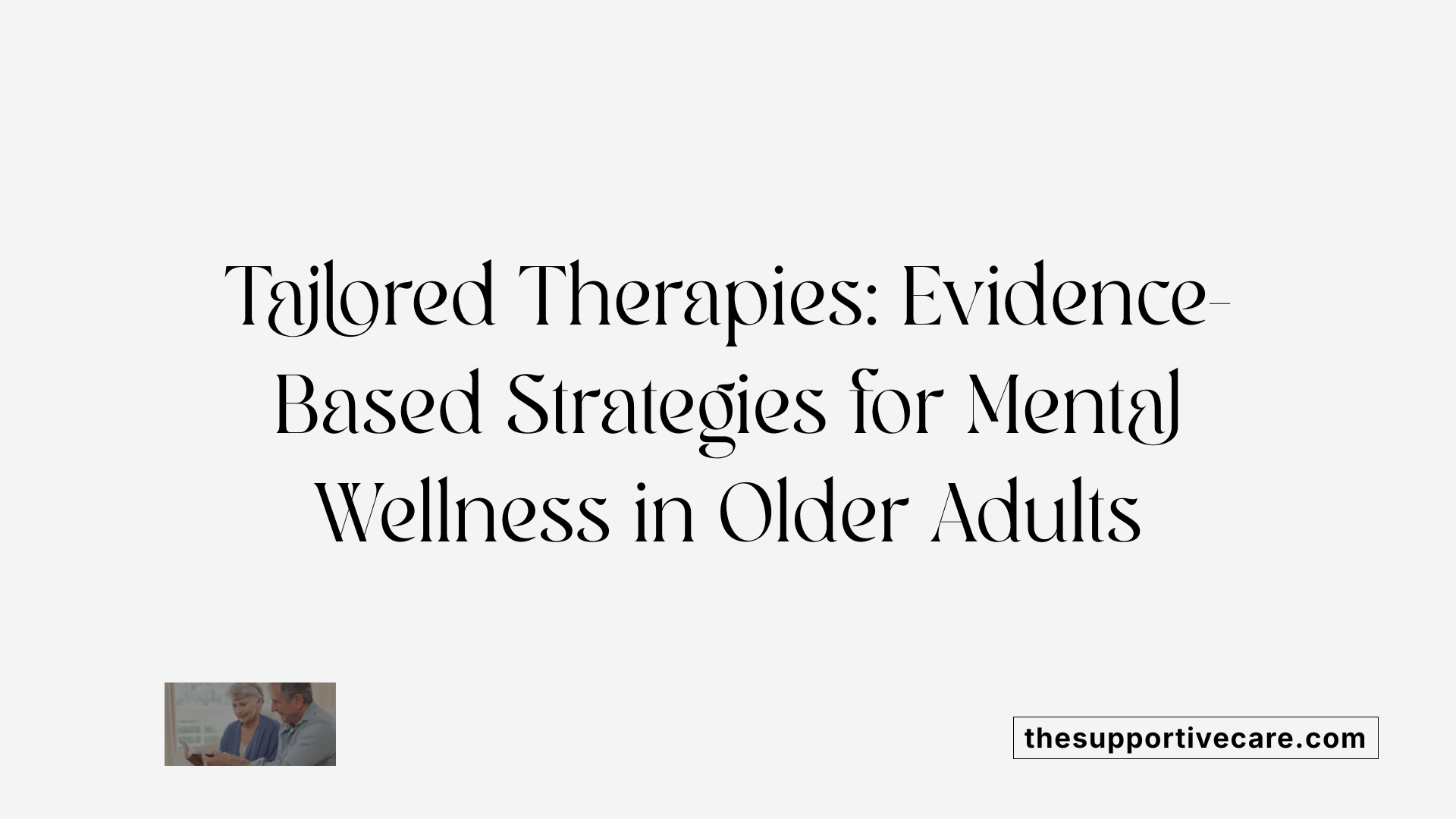
What are some effective therapies for mental health in older adults?
Older adults benefit from a variety of therapeutic approaches that address their unique mental health needs. Cognitive-behavioral therapy (CBT) remains a highly effective method for managing depression and anxiety, as it helps reshape negative thought patterns and develop healthier coping strategies.
Reminiscence therapy, which encourages recalling past experiences, can enhance mood and provide a sense of identity and continuity, often reducing feelings of loneliness or depression.
How do group therapy and social engagement contribute?
Group therapy offers a supportive environment where older adults can connect with peers facing similar issues, reducing social isolation and fostering community. Studies show that geriatric group therapy significantly decreases symptoms of depression.
Engagement in social activities, community programs, and support groups enhances emotional wellbeing and promotes healthy aging. Participation in meaningful activities helps maintain cognitive function and life satisfaction.
What are non-traditional therapies like art, music, laughter, and reminiscence?
Art therapy encourages self-expression and can improve mood and cognitive functioning. Music therapy uses melodies to evoke memories and reduce anxiety. Laughter therapy, involving laughter exercises, has been shown to decrease stress and enhance emotional resilience.
Recreational therapies like laughter and art often complement other treatment modalities, providing accessible, enjoyable ways to boost mental health.
Considerations for medication safety in elderly patients
When treating elderly patients, medication safety is paramount. It involves careful management of prescribed drugs to minimize adverse effects and interactions.
Regular medication reconciliation helps maintain an accurate list of all medications, including over-the-counter drugs and supplements. This process prevents errors, reduces polypharmacy risks, and ensures appropriate treatment adjustments.
Healthcare providers should review potential drug interactions, especially since older adults frequently take multiple medications for chronic conditions.
Monitoring for adverse drug reactions is crucial, as age-related physiological changes can alter drug absorption, distribution, metabolism, and excretion.
Simplifying medication regimens, such as using once-daily dosing or long-acting formulations, improves adherence and reduces confusion.
Utilizing technological tools like computerized order entry systems and barcode scanning enhances safety by decreasing medication errors.
Strict adherence to safety protocols—the 'Seven Rights' of medication administration—verification of patient identity, thorough patient education, and proper storage are essential practices.
Special attention should be given to high-alert medications like anticoagulants, sedatives, and antipsychotics due to their higher risk profiles.
Periodic medication reviews are necessary to deprescribe unnecessary drugs and optimize therapy, ultimately enhancing patient safety.
Fostering a culture of safety through transparent error reporting and ongoing staff training supports continuous improvement in medication management.
Enhancing Treatment Adherence through Supportive Strategies and Community Resources
How can healthcare providers assess the safety, appropriateness, and efficacy of combined medication and therapy approaches for the elderly?
Assessing the safety and effectiveness of combining medications and therapy in older adults requires a systematic and individualized approach. Healthcare providers start with comprehensive medication reviews, which help identify medications that may be inappropriate or pose risks for the elderly, such as those flagged by the Beers Criteria or STOPP/START tools. These reviews evaluate potential drug-drug interactions, adverse effects, and the necessity of each medication.
Providers should also consider deprescribing unnecessary medications to minimize polypharmacy, which is common in this population and increases the risk of adverse outcomes. Tailoring treatments according to the patient’s health status, comorbid conditions, and personal preferences is crucial.
Interprofessional collaboration plays a vital role, with input from pharmacists, primary care physicians, psychiatrists, and other specialists to create safe, effective treatment plans. Regular monitoring of therapeutic outcomes and side effects, coupled with the use of health information technology, ensures ongoing safety.
Regulatory standards and early safety and efficacy data from clinical trials further inform the appropriateness of combined approaches. Clear communication with patients and caregivers about treatment goals and possible risks enhances shared decision-making.
An ongoing evaluation process, incorporating validated assessment tools and patient feedback, supports continuous adjustment of therapies, ultimately optimizing care while minimizing harm.
Achieving Equilibrium in Geriatric Behavioral Care
Balancing medication and therapy in elderly behavioral treatment plans necessitates a nuanced, patient-centered approach that emphasizes safety, efficacy, and engagement. Incorporating comprehensive assessments, evidence-based practices, and collaborative care models ensures that both pharmacological and psychosocial interventions complement and reinforce each other. Tailored strategies that address individual needs, barriers, and social determinants foster treatment adherence and improve outcomes. As the healthcare landscape evolves, integrating innovative tools and multidisciplinary teamwork will be vital in achieving optimal mental health and overall well-being for older adults. Ultimately, a balanced, holistic approach not only stabilizes symptoms but also supports resilience and quality of life in geriatric populations.
References
- Designing Personalized Treatment Engagement Interventions for ...
- [PDF] Practice Guide: Integrated behavioral health care for older adults
- Interventions for improving medication‐taking ability and adherence ...
- Balancing Therapy Medication | Carelon Behavioral Health
- [PDF] Psychosocial Interventions for Older Adults with Serious Mental Illness
- 39040: Psychiatric Treatment Options in the Older Adult - NetCE
- Medication management in older adults











